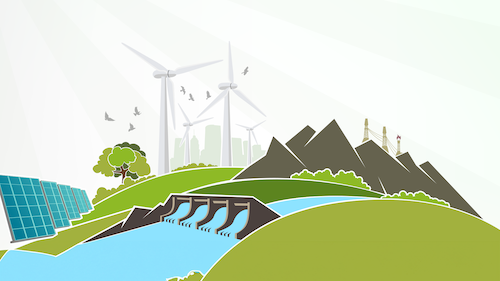In a discreet control room in Kalkaji, South Delhi, a screen flashes red as solar generation wanes and evening demand intensifies. Yet the grid holds firm. The lights do not flicker. Deep within the city's energy infrastructure, a silent bank of batteries activates, discharging power in milliseconds to stabilise the load. It's a seamless intervention, unseen but indispensable, enabled by a technology quietly positioning itself as the invisible backbone of India's energy future: Battery Energy Storage Systems (BESS).
The logic is intuitive. Think back to school lessons on rainwater harvesting. Just as tanks store rain during the monsoon to be used during droughts, Battery Energy Storage Systems captures excess electricity, especially from renewable natural resources like solar, when it is abundant and dispatches it when demand peaks or supply falters. Whether it's a local power cut or a grid-wide surge, BESS ensures continuity. Instantly. Silently. Reliably.
This isn't speculative. With more than 200 GW of renewable energy capacity, India is already past the threshold in its transition to clean energy.
According to the Ministry of New and Renewable Energy (MNRE), India's total installed renewable electricity generation capacity reached 220.10 GW1 as of March 31, 2025, marking a robust increase from 198.75 GW the previous fiscal year—a record annual addition of 29.52 GW. Including nuclear energy, the total non-fossil fuel capacity rises to 228.28 GW, bringing India significantly closer to its target of 500 GW of non-fossil fuel capacity by 2030. This now represents nearly 48% of the country's total installed generation capacity, underlining the structural transformation underway in India's energy mix.
These are more than milestones; they mark a structural realignment of the national energy portfolio. From vast solar parks across Rajasthan to the wind corridors of Tamil Nadu and revitalised hydroelectric assets in the Northeast, India is rapidly constructing a resilient, decentralised clean energy ecosystem. In 2023 alone, the country added 9.7 GW of solar PV capacity, ranking fifth globally in new installations. India closed the year with 72.7 GW of solar capacity, establishing its status as a global leader in renewable energy efforts.
This acceleration hasn't occurred in isolation. It is scaffolded by a framework of deliberate, progressive policy and global climate commitments. India's enhanced Nationally Determined Contributions (NDCs), submitted under the Paris Agreement, form the strategic backbone of this transition. Among the key pledges:
- Reduce emissions intensity by 45% by 2030, relative to 2005 levels
- Achieve 50% cumulative electric power capacity from non-fossil fuel sources by 2030
- Promote sustainable living through the LIFE movement (Lifestyle for Environment)2
These are not aspirational slogans; they are embedded in the Long-Term Low Carbon Development Strategy, submitted to the UNFCCC in November 2022, which maps India's pathway to net-zero emissions by 2070.
Yet, as this clean energy base expands, a more complex challenge emerges: integration. Solar and wind are inherently intermittent sources. This variability places growing pressure on grid stability, frequency regulation, and peak load management. Without smart buffers, the very assets designed to secure our energy future could destabilise it.
This is where BESS enters, not as an auxiliary feature but as a central enabler of the renewable natural resource era. And India is not waiting on the sidelines.
In the flagship project in Rajnandgaon, Chhattisgarh, Solar Energy Corporation of India (SECI) commissioned country's largest BESS installation under the Ministry of New and Renewable Energy. The system comprises a 40 MW / 120 MWh battery unit coupled with a 152.325 MWh solar PV plant, capable of dispatching 100 MW AC, with a peak DC capacity of 155.02 MW.
Meanwhile, in the heart of the national capital, BSES Rajdhani Power Limited (BRPL), supported by the Global Energy Alliance for People and Planet (GEAPP) and a consortium of IndiGrid and AmpereHour Energy, has commissioned3 a 20 MW / 40 MWh BESS project, delivered in a record 20-month timeline. Today, it plays a critical role in managing Delhi's complex load profiles.
Battery Energy Storage Systems not only provide emergency support, but also enable the grid to:
- Defer costly upgrades to transmission and distribution infrastructure
- Smooth out daily and seasonal peaks in demand
- Stabilise voltage and frequency with real-time responsiveness
- Unlock economic opportunities like energy arbitrage
For India's distribution companies (DISCOMs), many of which are financially strained, BESS offers more than resilience. It introduces the possibility of strategic load shifting, reduces curtailment, and supports dynamic, market-based tariff models.
A case in point: Delhi's power demand follows a distinct dual-peak pattern—once in the afternoon and again between 11 PM and midnight. BESS units are programmed to charge when electricity prices dip, typically during off-peak hours, and discharge during periods of high demand when prices surge. The economic logic is straightforward but powerful: purchase power at, say, ₹2 per unit, and discharge it when rates climb to ₹8 or even ₹10 per unit. What seems like a modest margin becomes a multiplier, enhancing grid stability while improving financial returns.
Clearly, India's clean energy transition is now at scale, and its future progress will rely on how well it integrates, manages, and distributes this growing energy infrastructure. BESS has already demonstrated its merit in both pilots and operational systems. And India is not alone in its ambition.
Around the world, battery energy storage is being embedded into national grid strategies:
- United States (California): Over 10 GW of storage projects help manage solar variability and offer critical backup during wildfire-related outages.
- Australia: The Hornsdale Power Reserve4, developed by Tesla, proved that BESS can outperform gas peaker plants in both speed and cost-efficiency.
- China: Home to the world's largest BESS development pipeline, integrating storage into sprawling solar mega-parks.
- Germany: Uses BESS for residential solar integration and grid balancing, enabling decentralised energy resilience.
Yet even as the promise of BESS becomes clearer, scaling it across India requires more than technical readiness—it calls for robust policy, financial innovation, and regulatory clarity. And India has begun building this foundation. The National Electricity Plan (NEP) 2023, published by the Central Electricity Authority (CEA), anticipates the need for 74 GW / 411 GWh of energy storage by 2032 to manage renewable natural resource variability, signalling a definitive shift in how the grid must evolve.5 Complementing this is the National Framework for Promoting Energy Storage Systems, released by the Ministry of New and Renewable Energy (MNRE) in 2022, which recognises BESS as a standalone asset class.6 This is a significant step toward resolving long-standing classification ambiguities that hinder investment and tariff design.
Further strategic direction comes from the Energy Storage Roadmap (2019–2032) by the India Smart Grid Forum and NITI Aayog, which outlines phased targets for deployment, grid flexibility, and market mechanisms7. At the industrial level, the government is actively encouraging domestic battery manufacturing through initiatives such as the Production Linked Incentive (PLI) Scheme for Advanced Chemistry Cells (ACC) and recent commitments to develop gigafactory-scale battery plants in India, reducing reliance on imports and lowering system costs over time.8
From a financing perspective, innovative models are beginning to emerge. The Kilokari BESS project, developed under a BOOT (Build-Own-Operate-Transfer) framework, demonstrates one such pathway. Others include Public-Private Partnerships (PPPs), Viability Gap Funding (VGF) for early-stage deployments, and the issuance of green bonds earmarked for storage infrastructure. These mechanisms are helping de-risk investment in a still nascent but rapidly growing sector.
Space constraints, fire safety regulations, and structural norms are evolving alongside technology. Institutions like the Central Electricity Authority (CEA) and the Bureau of Indian Standards (BIS) are currently formulating guidelines to standardise design, safety, and siting norms for grid-scale and behind-the-meter BESS systems.
India's ancillary services market—which would enable BESS to monetise fast-response capabilities like frequency regulation and spinning reserve—is in its early stages. The Central Electricity Regulatory Commission (CERC) has initiated consultations, but full market implementation is pending.
Battery Energy Storage Systems are no longer just pilot projects—they are becoming integral to India's evolving energy narrative. As generation becomes cleaner and more decentralised, the challenge now is integration. It is here that BESS steps in: not merely as a technical solution, but as a structural enabler of resilience, efficiency, and market flexibility.
India's policy ecosystem is responding—with ambitious plans, national frameworks, targeted incentives, and a manufacturing push that mirrors its early success in solar. The next frontier is the creation of a coherent, investable ecosystem where storage can be scaled affordably, deployed safely, and monetised fairly. From smart tariffs and grid services to financial innovation and R&D, the levers are in place. In the silent work of lithium-ion arrays, tucked behind substations or embedded in urban basements, lies the sound of a new energy order. If India can align its ambition with execution, then Battery Energy Storage Systems will not just bridge peaks and troughs—it will bridge policy and practice, reliability and sustainability, today and tomorrow.
To know more visit Renewable Energy sector page!
This blog is written by Aashee Sharma

